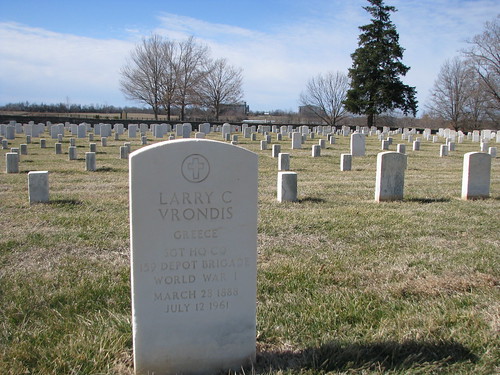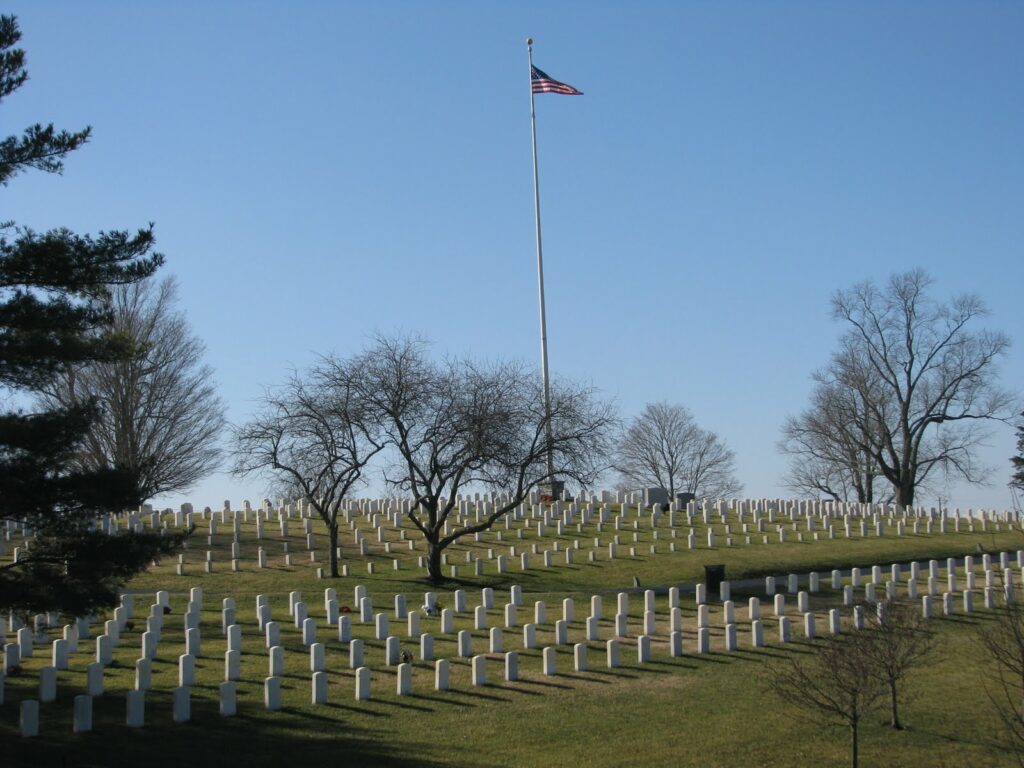 |
| Headstones at Camp Nelson National Cemetery – Nicholasville, Ky. |
In southern Jessamine County lies the Camp Nelson National Cemetery, one of eight national cemeteries in the Commonwealth. Prior to being a designated national cemetery (1866), Sections A, B, C and D contained the buried dead from the Civil War-era Camp Nelson. This 3.5 acre area was subsequently expanded around the time of its designation to approximately 8 acres, but today it is much larger at about 51 acres (thanks in part to a donation of 10 acres made in 1975 and the acquisition of 21 acres in 2010). In fact, current acreage would allow a total of approximately 30,000 graves while the current census is less than 15,000.
A part of the massive Civil War-era Camp Nelson complex – once 4,000 acres – the first soldiers buried here were likely victims of smallpox and other non-conflict causes. At least one death was noted due to a “falling tree.” [*] After becoming a designated national cemetery, 2,023 dead from various Kentucky battlefields and skirmishes were reinterred here: from Frankfort (104), Richmond (241), London (266), Covington (437), and from Perryville, where the Confederates were defeated in October of 1862 (975).
Pictured above is one of the many headstones located at the cemetery. If you look closely, you’ll note that it is that of Larry C. Vrondis (a WWII Veteran who I have mentioned on this site before). On this Memorial Day, we thank all of our veterans (and their families) for their service to our country.
You can visit Camp Nelson for its Memorial Day events on Monday, May 30 at 11:00 a.m.



